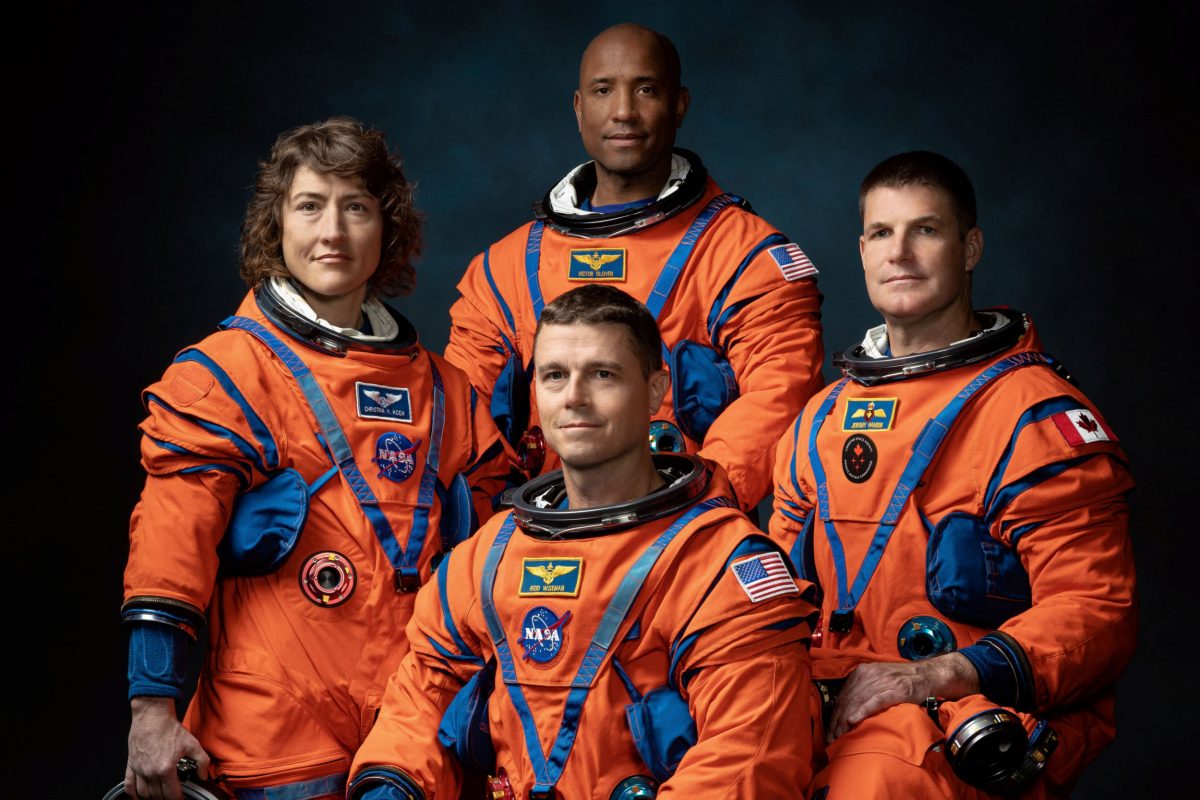Science
NASA Prepares for Artemis II Mission: A New Era of Lunar Exploration

NASA is set to embark on a landmark mission with the upcoming launch of the Artemis II spacecraft, scheduled for February 2024. This mission marks the first crewed journey to the Moon in over 50 years, although it will not land on the lunar surface. Instead, it will orbit the Moon and serve as a precursor to future missions aimed at establishing a sustainable human presence on the Moon.
The Artemis II mission involves a crew of four astronauts and will last approximately ten days. While it may not land on the Moon, it is a critical step towards the ambitious goal of creating a long-term lunar base. Some critics argue that the program’s extensive goals could be achieved through less costly and less risky uncrewed missions. Yet, supporters believe that crewed exploration could yield significant scientific and technological advancements.
Dr. Sarah Casewell, an astronomer at the University of Leicester, expressed enthusiasm for the mission, stating, “The idea that we’re putting people back on to the Moon is really exciting and aspirational for a young generation of people.” The question many ask is why human exploration of the Moon stopped after the initial landings between 1969 and 1972, which saw six missions deliver twelve astronauts to the lunar surface.
The early Moon landings were driven by the intense competition of the Cold War, specifically the space race between the United States and the Soviet Union. Once the United States achieved its goal of landing on the Moon, the extraordinary costs of subsequent missions led to a decline in the space program’s momentum. For decades, NASA faced political hurdles regarding funding and direction, which hindered its ability to continue lunar exploration.
Strategic Goals and International Competition
The Artemis program has gained renewed vigor under both the Trump and Biden administrations, with bipartisan support highlighting its importance. Former President Trump emphasized the need for the U.S. to return to the Moon before China and Russia could establish their presence. This national pride echoes the sentiments that fueled the original space race.
China has made significant strides in lunar exploration, notably becoming the first nation to land a spacecraft on the far side of the Moon in 2019. In 2021, it successfully returned soil samples from that region. Plans are also in motion for a joint lunar base with Russia, heightening the urgency for the United States to advance its own lunar ambitions.
Amidst these geopolitical tensions, the Artemis II mission is seen as a vital step towards not only lunar exploration but also future missions to Mars. The spacecraft will travel approximately 9,000 miles beyond the Moon, taking the astronauts further from Earth than ever before. Notably, this mission will also include the first woman and the first person of color to journey to lunar orbit.
Scientific Advancements and Human Endeavors
The Artemis program aims to establish a base on the Moon that could serve as a launching point for Mars missions in the 2030s. The upcoming Artemis III mission is scheduled to land on the Moon in 2027, with astronauts spending a week on the surface. Subsequent missions, Artemis IV and V, will focus on developing a permanent lunar base, particularly near the Moon’s south pole.
A significant aspect of this initiative is its potential for scientific discovery. NASA plans to conduct numerous experiments during the Artemis missions, allowing researchers to study how the human body reacts to low gravity, cosmic radiation, and the rigors of space travel. Additionally, astronauts will gather soil and rock samples, providing invaluable insights into the Moon’s geology and history.
Professor Mahesh Anand, a lunar scientist at the Open University, emphasized the importance of human involvement in these missions. He noted that while robotic missions are capable of collecting samples, human beings can make quick decisions and select samples based on their observations, enhancing the efficiency and quality of the research.
The exploration of the Moon is not only about immediate scientific gains but is also seen as a critical step for ensuring the long-term survival of humanity. Prominent figures like Elon Musk advocate for establishing habitats on the Moon and Mars as a safeguard against potential existential threats to Earth.
As the Artemis missions unfold, they are likely to inspire future generations and foster a renewed interest in space exploration. The original Apollo program yielded numerous technological advancements, including developments in computing and navigation systems. Dr. Casewell noted that space exploration sparks creativity and imagination in young people, which can be beneficial across various fields.
As NASA prepares for this new chapter of lunar exploration, the Artemis II mission represents a blend of scientific ambition, geopolitical strategy, and a vision for the future of humanity in space.
-

 World2 weeks ago
World2 weeks agoCoronation Street’s Shocking Murder Twist Reveals Family Secrets
-

 Entertainment1 week ago
Entertainment1 week agoAndrew Pierce Confirms Departure from ITV’s Good Morning Britain
-

 Entertainment5 months ago
Entertainment5 months agoKate Garraway Sells £2 Million Home Amid Financial Struggles
-

 Entertainment4 months ago
Entertainment4 months agoAnn Ming Reflects on ITV’s ‘I Fought the Law’ Drama
-

 Entertainment1 month ago
Entertainment1 month agoCoronation Street Fans React as Todd Faces Heartbreaking Choice
-

 Health4 months ago
Health4 months agoKatie Price Faces New Health Concerns After Cancer Symptoms Resurface
-

 World1 month ago
World1 month agoBailey Announces Heartbreaking Split from Rebecca After Reunion
-

 Entertainment2 weeks ago
Entertainment2 weeks agoTwo Stars Evicted from I’m A Celebrity Just Days Before Finale
-

 World2 weeks ago
World2 weeks agoKevin Sinfield Exceeds Fundraising Goal Ahead of Final Marathons
-

 Entertainment4 months ago
Entertainment4 months agoCoronation Street’s Carl Webster Faces Trouble with New Affairs
-

 Entertainment4 months ago
Entertainment4 months agoWhere is Tinder Swindler Simon Leviev? Latest Updates Revealed
-

 Entertainment5 months ago
Entertainment5 months agoMarkiplier Addresses AI Controversy During Livestream Response




















